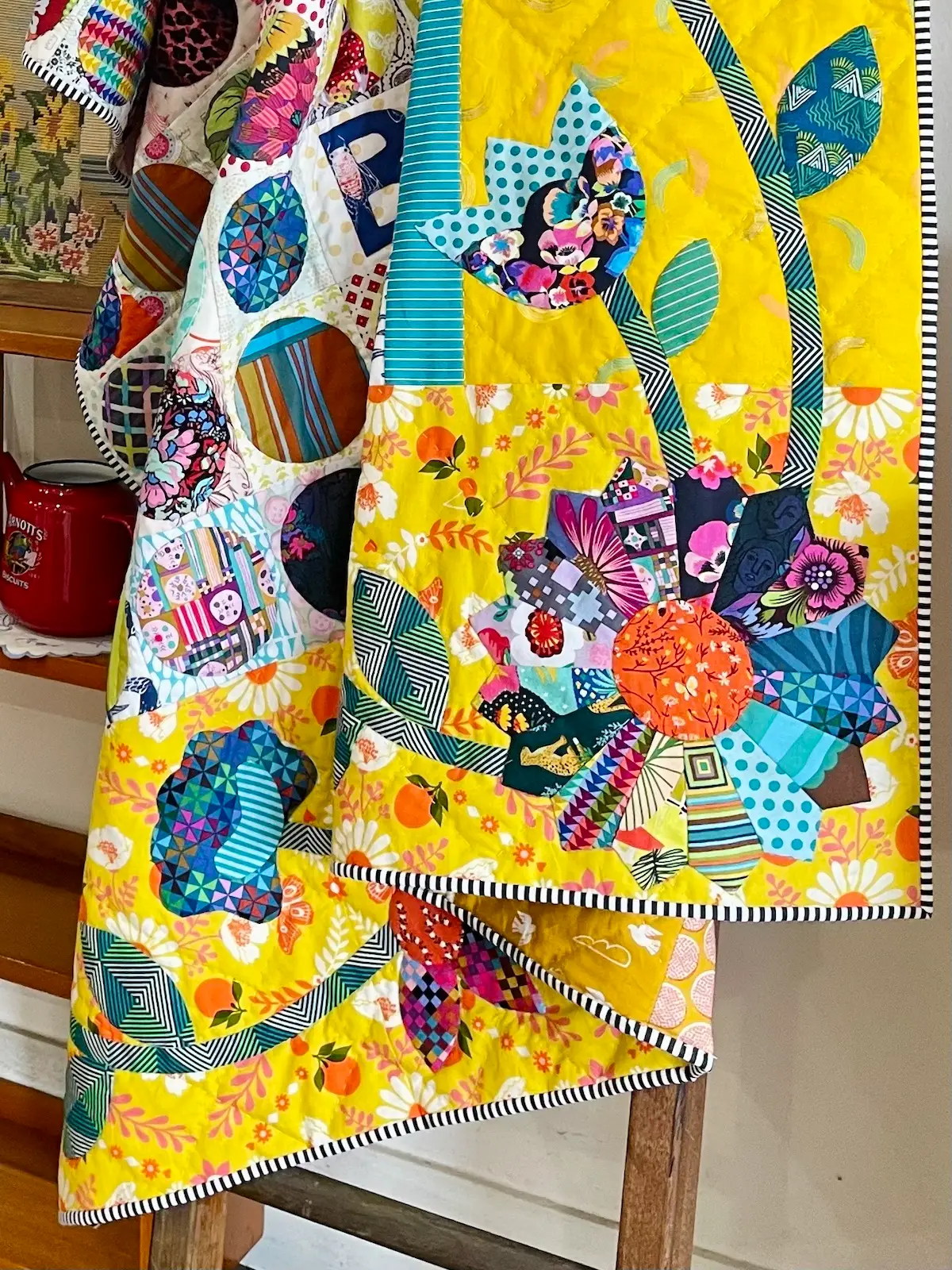Barbie Mitchell has been sewing since childhood, with creativity woven into every stage of her life. Today, quilting is her primary medium—where color, storytelling, and nature come together in vibrant, one-of-a-kind works.
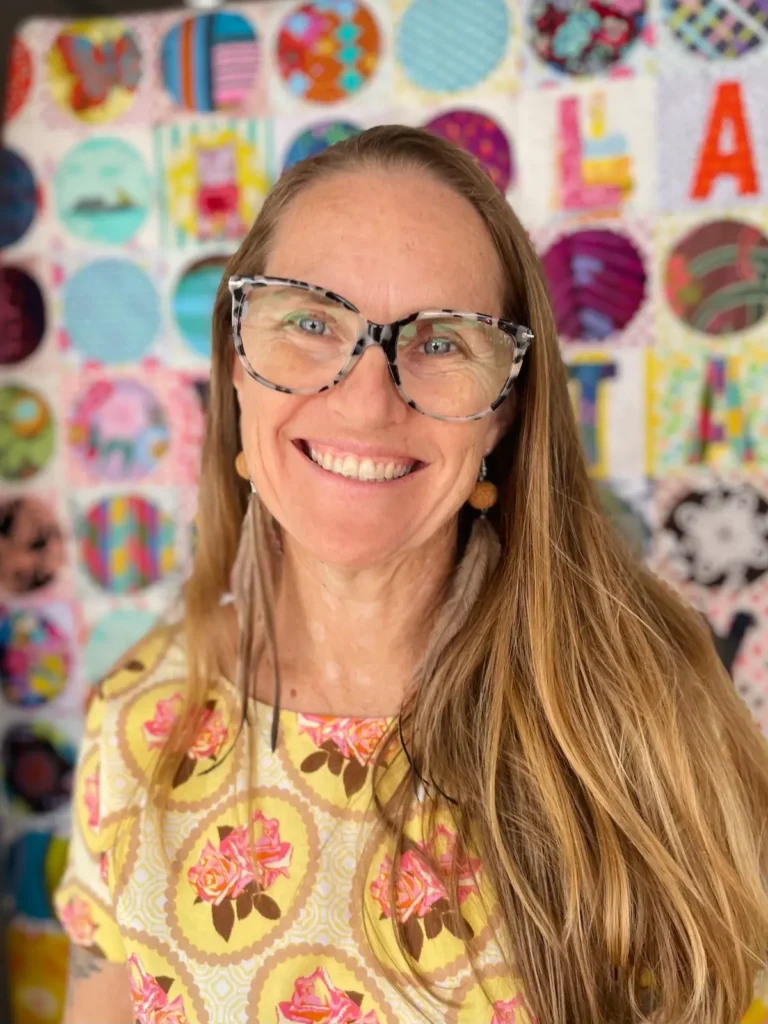
How did you get started designing quilts? Always an artist, or was there a “moment”?
I’ve been sewing for as long as I can remember—literally since I was a baby!
I grew up in a household where creative expression was as essential as breathing. My mother was a talented seamstress, and our home was always filled with a beautiful chaos of fabric, threads, and art supplies.
While I have been making and designing quilts for 25 years, I feel like I’ve been an artist my entire life. My journey has been less about a single “moment” and more of a natural, continuous evolution.
As an Amazon Associate I earn from qualifying purchases. Read more about our affiliate linking policy.
Quilting has become my primary medium, a way to stitch together a lifetime of creativity and a deep-seated love for fabric and form.
What techniques or skills did you transfer from garment making to quilting? How does your background in sewing clothes influence your quilts?
My first 25 years of sewing were almost exclusively dedicated to garment making. This background gave me a strong foundation in essential skills that are absolutely transferable to quilting—things like precision with seam allowances, understanding how fabric drapes and behaves, and a meticulous approach to finishing.
This early experience in constructing clothing has given me a deep respect for the structural integrity of my work. It’s not just about creating a beautiful surface; it’s about building a piece that will last and tell a story for years to come.
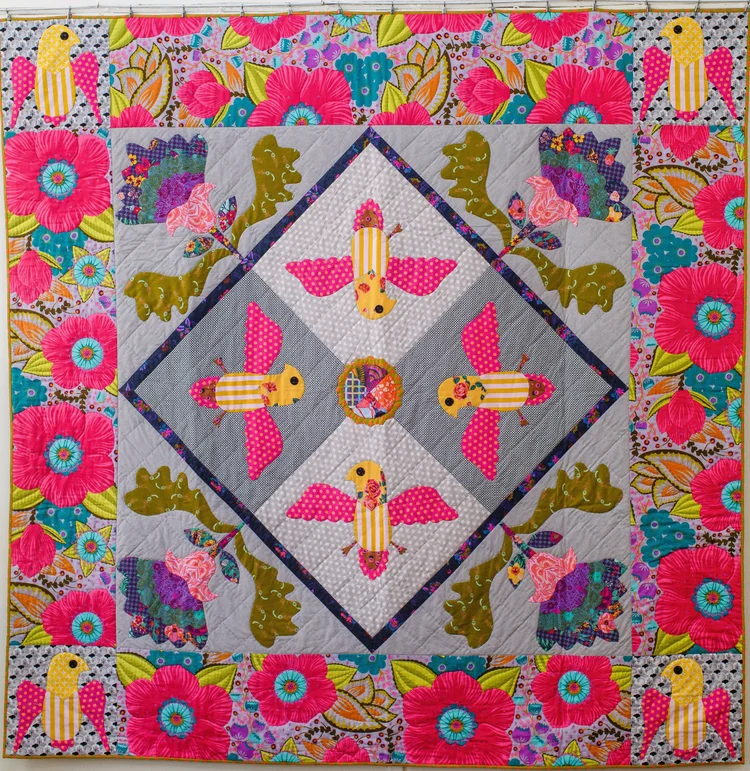
Is your work more content-driven or process-driven? Does an idea inspire a work of art, or do the materials launch an idea?
My work is definitely process-driven.
I am completely captivated by the act of making and the connection it provides to the world around me. My design process is a true collaboration with nature and my environment—my greatest muse is the life that surrounds me. It’s an organic exchange of ideas, where the physical process of cutting, stitching, and arranging becomes a conversation with the materials.
I also believe in the power of community, and the process of sharing techniques and stories with fellow quilters is a huge part of my creative practice.

Where do you find inspiration for your designs?
I find inspiration everywhere, but it always starts with colour. I’m drawn to vibrant and unexpected palettes that I see in the natural world. My primary muses are the intricate details of flowers, the playful energy of birds, and the textures of the bushland I live in.
Beyond nature, I’m a storyteller at heart. I love using text and narrative elements within my quilts to capture my experiences, thoughts, and memories. Each quilt becomes a chapter in my life’s story.

Describe your creative space.
I live completely off-grid, so my creative space is a direct reflection of my lifestyle. Nature is my studio.
I prefer to work on hand projects because they’re portable, allowing me to take my work with me everywhere. I spend a lot of time stitching outdoors, enveloped by the sights and sounds of the bush. I also love the collaborative energy of working with my friend Bree in her studio.
At home, my dedicated studio space, which my husband built for me, is my sanctuary. It’s here that I stitch alongside my Japanese Spitz, Frankie, and my flock of chickens, a constant reminder of the peaceful, wild life that fuels my creativity.
What are the indispensable tools and materials in your studio? How do they improve your work?
My most indispensable tools are my hands. As a hand sewer, I have an incredible appreciation for the way they connect me directly to the fabric. I care for them meticulously as they are the conduits for all my creative energy. For machine sewing, I have a purpose-built standing sewing bench that my husband crafted for me from repurposed materials. This custom setup has transformed my work, allowing me to be more comfortable and efficient.
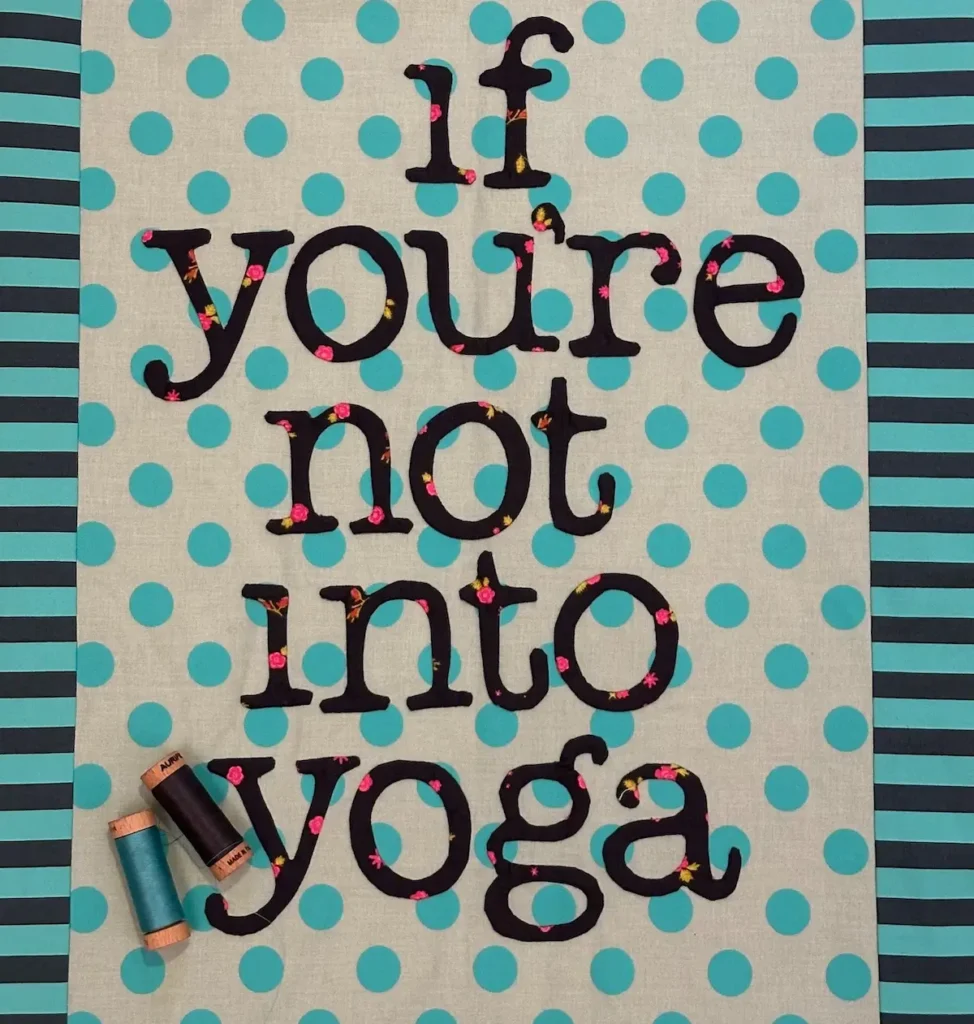
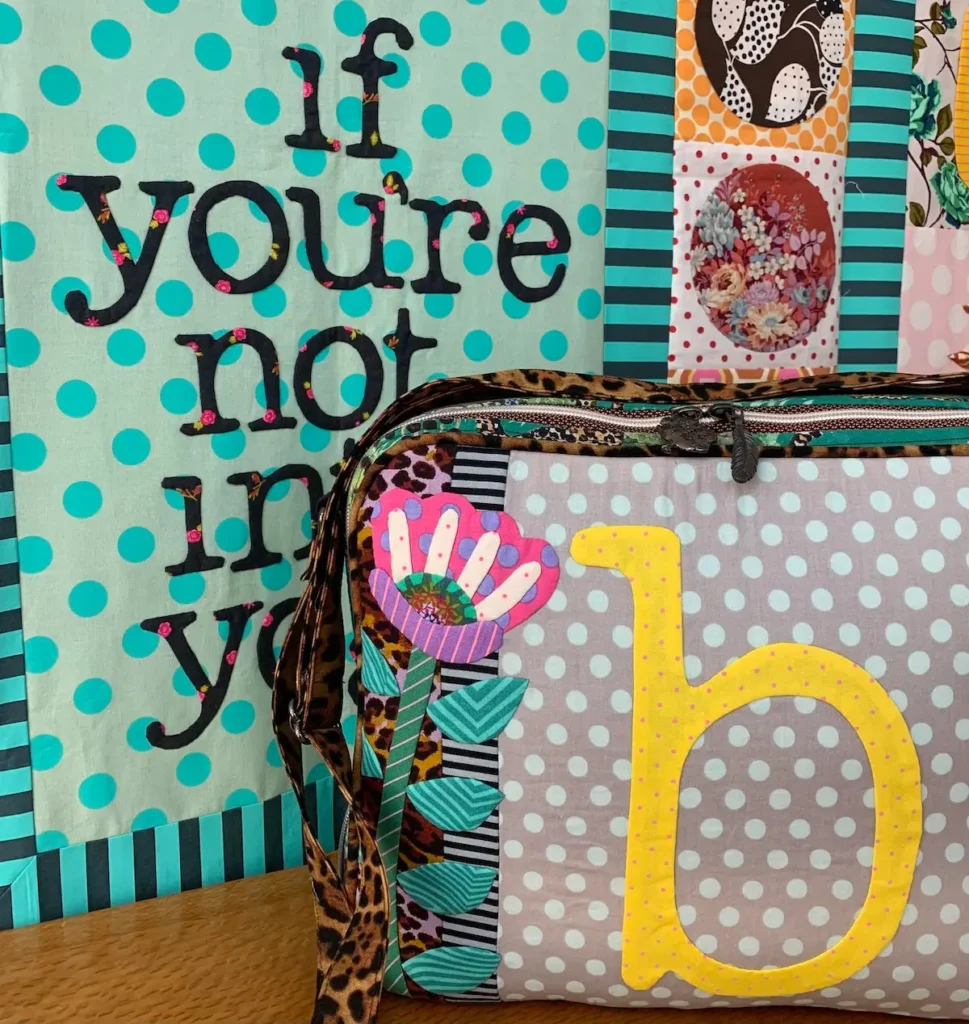
Scraps. Saver? Or be done with them?
Beyond my tools, scraps are my most beloved materials. They are a treasure trove of colour and texture, and as a scrappy quilter, I love the challenge of piecing them together. Using scraps is also my way of being a mindful maker, ensuring these beautiful bits of fabric stay out of the landfill and often end up in the hands of other quilty friends.
Are you a “finisher”? How many UFOs do you think you have?
I am absolutely a finisher, but I am also a multi-project maker. I love having several projects in various stages of completion. This approach allows me to work on whatever technique I’m in the mood for. I might be designing a new piece, working on the intricate needle-turn appliqué of another, and hand quilting a third. This variety keeps my creative process fresh and exciting, and ensures I always have a project on hand, no matter my mood.
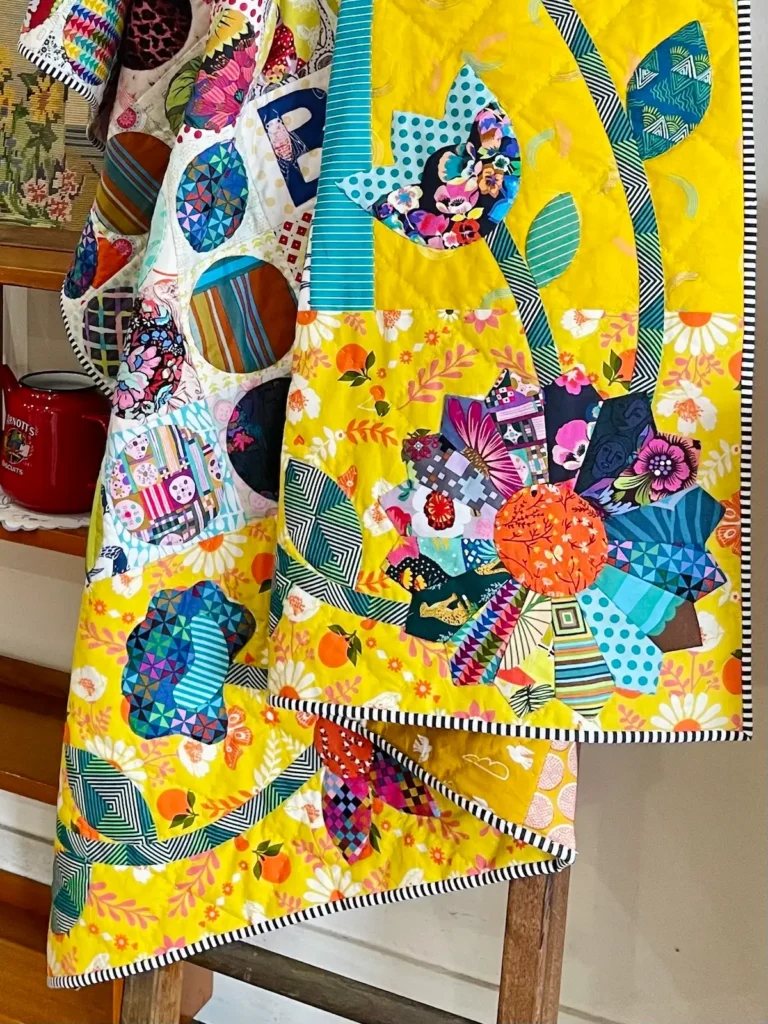

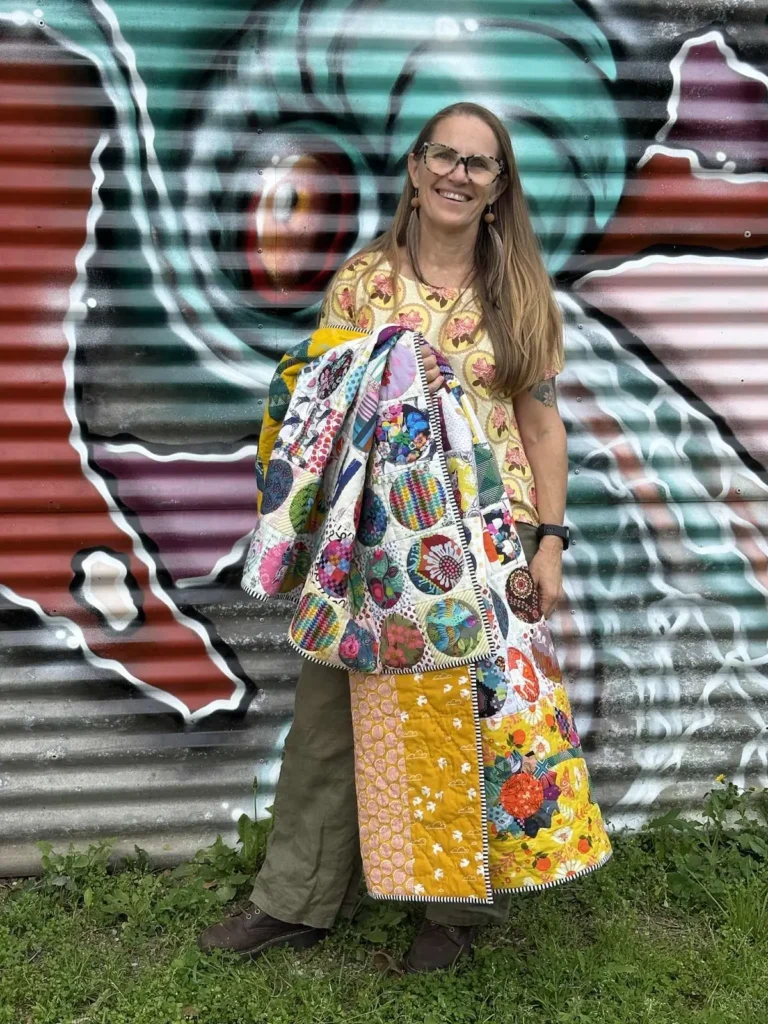
Do you use a sketchbook, journal, or technology to plan or keep track of ideas? How does that help your work develop?
I am old-school when it comes to my creative process. My primary tool is a bullet journal. I use it for everything—from daily journaling and morning pages to sketching out quilt designs and planning my day. This tactile, pen-and-paper approach helps me process my ideas more deeply and thoughtfully. It’s a direct extension of my hand-sewing practice—a physical, tangible way to record and develop my ideas, which I find far more fulfilling than using technology.
How often do you start a new project? Do you work actively on more than one project at a time?
Often. I always have multiple projects in motion – maybe 3 or 4 at one time. It’s a purposeful part of my creative rhythm. For example, I might have one piece in the design phase, a second in the needle-turn appliqué stage—which is perfect for taking on the go—and a third at the quilting phase. This allows me to always be working on a piece, no matter where I am.

Can you tell us about the inspiration and process of one of your works? How does a new work come about?
My work is deeply rooted in my life, experiences, and observations. A new work almost always begins with a simple, quiet moment—a thought I have, a feeling I’m experiencing, or a colour I notice on one of my nature walks. The idea for a new piece grows organically from these moments. The process is a seamless flow from inspiration to execution, as the design and the story evolve together.
Which part of the design process is your favorite? Which part is a challenge for you?
Choosing a favorite part of the process is difficult because I love so many of them! Needle-turn appliqué is definitely a top contender. It’s a meditative and satisfying technique that allows me to create intricate, organic shapes. That said, I also find great joy in the final hand quilting. The most challenging part for me, however, is the more technical side of my practice—the computer work and the bookkeeping. It’s a necessary part of a creative business, but the struggle is definitely real!
What’s the best piece of advice you’ve received?
The best piece of advice I’ve ever received is, “Love what you do, and you never have to work a day of your life.” This sentiment completely captures my approach to quilting. It’s not a job; it’s a passion and a purpose. It’s a privilege to be able to share my art with the world and to connect with others who share a similar passion.
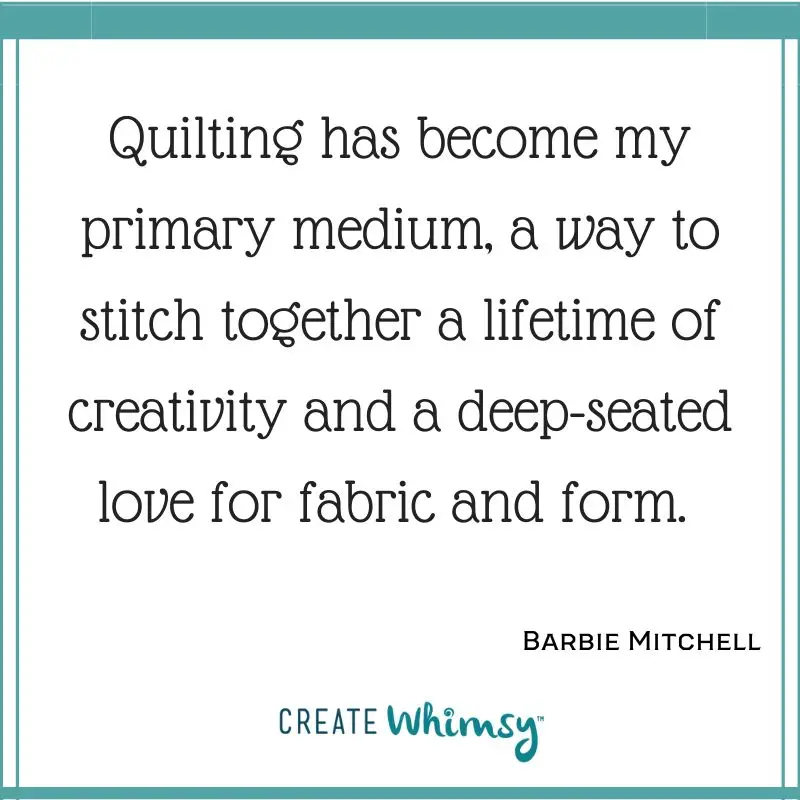
How has your work evolved over the years? Is there a common thread (pun intended!) across the years?
My work has become more refined and self-assured over the years. I’ve reached a point where I know what I like and I’m confident in my voice as a designer. The common thread is always a love for colour, a connection to the natural world, and a desire to tell stories through my stitches. My community has also grown and become an indispensable part of my work, providing me with inspiration, support, and friendship.
What do you do to keep yourself motivated and interested in your work?
I have a daily creative ritual that has been a game-changer: morning pages (The Artists way, a book by Julia Cameron). I journal each day to clear my mind and free up my creative energy. This simple practice helps me be more present and playful in my work, ensuring that every day starts with a sense of possibility and creative freedom. It’s a practice that grounds me and keeps the ideas flowing.
Where can people see your work?
Instagram: @_barbiemitchell
Website: www.barbiemitchell.com.au
Interview posted September 2025
Browse through more quilting inspiration on Create Whimsy.

